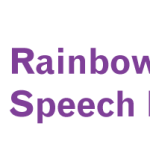CHILDHOOD APRAXIA OF SPEECH (CAS)
 What is CAS?
What is CAS?
CAS is a type of speech sound disorder where there is difficulty planning and programming the correct movements needed to speak. CAS is a neurological motor speech disorder.
Speech is the most complex motor task we do; requiring the use of over 100 different muscles and body parts. Our brain needs to coordinate what needs to move where, when, and how with great precision and accuracy.
People with CAS know what they want to say but the messages from the brain to the mouth get disrupted. This can result in speech that is very difficult to understand, and understandably, cause a lot of frustration!
What causes CAS?
In most cases, we don’t know what causes CAS. CAS can occur in isolation but often occurs with other genetic, neurological, or developmental disorders.
What are some of the signs?
Children with CAS may demonstrate some of the following:
- limited babbling and vocal play as a baby
- Late talker or minimally verbal
- Stronger receptive (understanding) language skills than expressive (using) language skills
- A limited range of consonant and vowel sounds
- A limited range of word shapes e.g. lots of simple, short words ‘mu, bu, du’.
- Awkward or imprecise movements between sounds and words.
- Silently mouthing, searching or effortful movements when trying to speak
- Impaired prosody – the wrong part of words might be stressed or their rhythm might sound robotic or “choppy”.
- Unusual speech sound errors, vowel errors, errors between voiced (b, d) and unvoiced sounds (p, t).
- Inconsistency: Words may not always be said the same way. Words they used to say may disappear.
Can it be treated?
Yes! Children with CAS need specialised treatment from a Speech Pathologist that targets these underlying motor difficulties. Augmentative and Alternative Communication (AAC) such as PODD, sign language or a speech generating device can be used to provide a way to communicate (and reduce frustration!) while they are learning to speak verbally.
For more information and support check out these groups:
https://www.facebook.com/ApraxiaKIDS
https://www.facebook.com/casparentsupportgroup
https://www.facebook.com/SLPMommy
References
American Speech-Language-Hearing Association (2007). Childhood Apraxia of Speech (Technical Report). Retrieved from http://www.asha.org/policy
Maas, E., Robin, D., Austermann Hula, S., Freedman S., Wulf, G., Ballard, K., & Schmidt, R. (2008). Principles of Motor Learning in Treatment of Motor Speech Disorders. American Journal of Speech-Language Pathology, 17, 277-298.
Murray, E., McCabe, P., Heard, R., & Ballard, K. (2015). Differential Diagnosis of Children with Suspected Childhood Apraxia of Speech. Journal of Speech, Language, and Hearing Research, 58(1), 43-60.
Strand, Edythe (2020). Dynamic Temporal and Tactile Cueing: A Treatment Strategy for Childhood Apraxia of Speech. American Journal of Speech-Language Pathology, 29(1), 30-48.
Written by Samantha Bolton
Certified Practising Speech Pathologist


